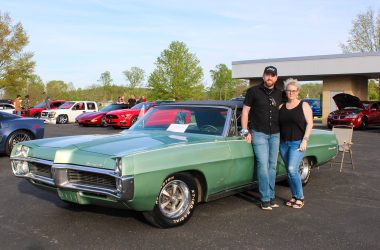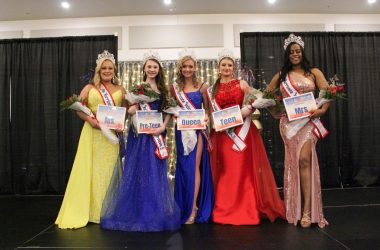Luke 24:1-12, 30-35
“Now upon the first day of the week, very early in the morning . . .” (v. 1). The text before us records two events which took place on the third day following the death of Jesus on the cross. The first occurred in the span of about an hour in the morning and the second in the evening between sunset and about 10 or 11 p.m. Two events, two pictures, one purpose. The gospel of Luke was written such that Theophilus might know with all certainty of the things concerning Christ that he had been instructed (Lk. 1:4).
The first 12 verses describe what happened following the visit of Mary Magdalene, Joanna, Mary the mother of James, and other women to the tomb where Jesus was buried. They did not find what they expected. They had come with spices and ointments which they had prepared for the anointing of the body of Jesus. They came expecting to find a sealed tomb. What they found was the stone rolled away and an empty tomb. They were confronted by something which they did not understand. There were two men in shining garments. Frightened, they bowed down. They heard a voice say, “Why seek ye the living among the dead?”
They had come seeking the body of a dead Jesus. They had come seeking that which did not exist. The Jesus whom they sought was very much alive. The angel reminded them that Jesus had told them that He would be slain and would rise on the third day (Lk. 9:22, 18:33). The women returned to the eleven and told them what had transpired but the apostles believed not.
Peter ran to the sepulchre, saw Jesus’ linen burial clothes laid aside, and departed wondering. Peter and the others believed that Jesus was the Christ (see Lk. 9:20) but they did not understand the scriptures nor did they understand or remember that Jesus had told them that He would be slain and would rise on the third day. Just seven days earlier, they and the throngs which followed Jesus had entered into Jerusalem declaring Jesus to be the son of David who would redeem Israel. Just days later, they saw Jesus die upon the cross from far off (Lk. 23:49). Now, Peter beheld an empty tomb and wondered.
The second picture begins at Emmaus and ends at Jerusalem. The village and the city are separated by about seven and a half miles. Two believers, Cleopas and an unnamed disciple, discover that they had been unknowingly in Jesus’ presence and had listened to Him as He expounded upon all which is said concerning Himself in the scriptures in Moses (Genesis through Deuteronomy) and in the prophets (v. 27). These two had been in Jesus’ presence for hours as they walked to Emmaus, yet, did not recognize Him. They only recognized Jesus after He had finished opening their eyes to that which the scriptures declare and, “he took bread, and blessed it, and brake, and gave to them” (v. 30). Jesus, then, vanished before their eyes. The two then returned to Jerusalem to tell the apostles that they had seen Jesus. Upon their arrival they learned that Simon Peter had also seen Jesus in the flesh (v. 34).
As noted earlier, the intent for which these things were written was that Theophilus should know with all certainty that Jesus rose from the grave on the third day. There is more, however, than the presentation of evidence that Jesus had risen from the dead in the text before us. In verse 30, we see a picture within a picture. We see Jesus in the presence of believers, blessing and breaking bread, giving that bread to them, and then, revealing Himself to them for the very first time. The two did not know Jesus until the scriptures were opened to them. They did not know Him until after they understood that He was the seed of woman who would bruise the serpent’s (the tempter’s) head; that He was the One who was wounded for their transgressions and bruised for their iniquities (Isa. 53:5); that He was the Messiah who would be cut off (killed) but not for Himself (Dan. 9:26); that it was for His garments that lots would be cast (Ps. 22:18); that it was His hands and feet that would be pierced (Ps. 22:16); that it was Him who would be offered vinegar to drink (Ps. 69:21); and that He is the Prophet like unto Moses who would speak the very words of God (Deut. 18:18). Jesus revealed these things and much more because there is much more. The two recognized Jesus and knew Him with absolute certainty because they believed the Word of God.
Cleopas and the other disciple departed within the hour to tell the eleven both what they had seen and that which they now knew with absolute certainty. Their certainty is shared by all who, likewise, believe the scriptures.
The closing verse before us states that the two told the eleven of the things which were done in the way. The two told the disciples the things which Jesus had said. They told the eleven of how their hearts burned as Jesus opened the scriptures to their understanding. They shared that which Jesus had made known to them. Jesus had made all things in the scriptures concerning Himself known to them (v. 27). Jesus is the Son. The Father and the Son are one on all things. God chose Cleopas and a nameless believer to declare the certainty of Jesus’ victory over the grave to Peter, to James, to John, and to the other eight. God empowered two without understanding to bring understanding to many.
There is no limit to that which God can do through them who know with all certainty that He has given His Son that men may live. Let us be obedient to the Comforter (the Holy Spirit) who has come to teach us all things (Jn. 14:26). Let certainty produce abundant fruit.



